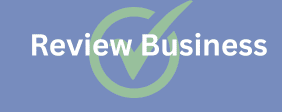Installing WordPress is just the beginning of creating a website. Once it is complete, the initial configuration phase follows, which is critical for the functionality and security of the site.
First, setting the time, time zone, and language is necessary for accurate posting and content consistency. Additionally, elements such as the website title and tagline are essential for its identity.
Understanding your posting and commenting phone number list settings is also crucial. Setting default categories and tags, as well as comment moderation options, shapes how you manage your content and interact with your users.
Then, implementing permalinks settings directly affects the URL structure of pages and posts, as well as the ease of finding pages by search engines and users.
The primary settings also include security settings, such as choosing a secure password and setting user permissions, which are necessary to protect the
Primary Settings
Designing a WordPress website requires careful selection of themes, which should reflect both the aesthetics and identity of the brand or project. An important criterion is that they are responsive, to guarantee optimal viewing on various devices, and compatible with the latest versions of WordPress.
Highlighting the uniqueness of the website comes through theme customization, which is why it is recommended to choose themes with a wide range of customization options. In addition to visual aesthetic criteria, code clarity, loading speed, and SEO friendliness are crucial in order to ensure easy findability and better ranking in search engine results.
Select a Topic
The theme selection process determines the aesthetics and functionality of the website. It is best to be guided by your audience’s needs and content strategy.
When choosing a theme, look for one that provides the desired level of flexibility and adaptability. It should support extensions (plugins) and combine discover 4 valuable marketing automation tools and why they will help you boost your company’s results attractive design with commercial effectiveness.
Before making a decision, check and compare the demos of the final candidate themes. This is essential for evaluating the actual performance on different screen sizes and browsers.
Consider the theme’s compatibility with different languages and its multi-functionality, especially if you’re targeting an international market. Additionally, regular updates from the creators are essential for security and ongoing compatibility.
Finally, consider the support and community a complete list of unit phone numbers that surrounds the topic. An active forum or easy access to guides and support can prove vital to the proper functioning of your website.
